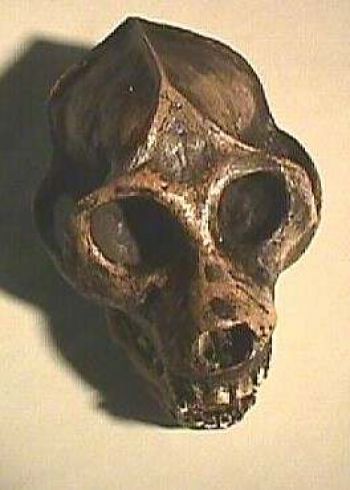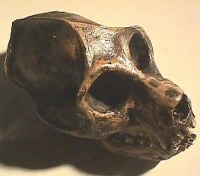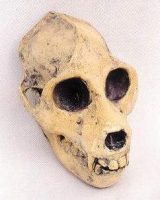
Aegyptopithecus, which means "Egyptian Monkey" is an early fossil catarrhine that predates the divergence between hominoids (apes and humans) and cercopithecids (Old World monkeys). It is known from a single species, Aegyptopithecus zeuxis, which lived around 30 million years ago in the early part of the Oligocene epoch. It likely resembled modern-day New World monkeys and was about the same size as a modern howler monkey, which is about 56 to 92 cm (22 to 36 in) long. Aegyptopithecus fossils have been found primarily in modern-day Egypt. Aegyptopithecus is believed to be a stem-catarrhine, a crucial link between Eocene and Miocene. Aegyptopithecus was discovered by Elwyn Simons in 1965 in the Jebel Qatrani Formation, located in the Faiyum Governorate of central Egypt. Aegyptopithecus zeuxis fossils were originally thought to be between 35.4 and 33.3 million years old, based on initial analysis of the formation in which they were found. However, analysis by Erik Seiffert in 2006 concluded that the age of the Jebel Qatrani Formation should be revised. His assessment of more recent evidence indicates an age of between 30.2 and 29.5 million years ago.
resin
3.75 inches long
Item 1552
Category: Replicas
Type: Skulls
Phylum: Vertebrates
Class: Hominids & Humans
MORE PHOTOS:



Now Over 1,000 Items!
PrehistoricStore.com offers the largest selection of replica fossils and other fossil-related products anywhere in the world!
Download a Full Catalog (3MB PDF)
OVER 260 PAGES OF REPLICAS AND MORE!
